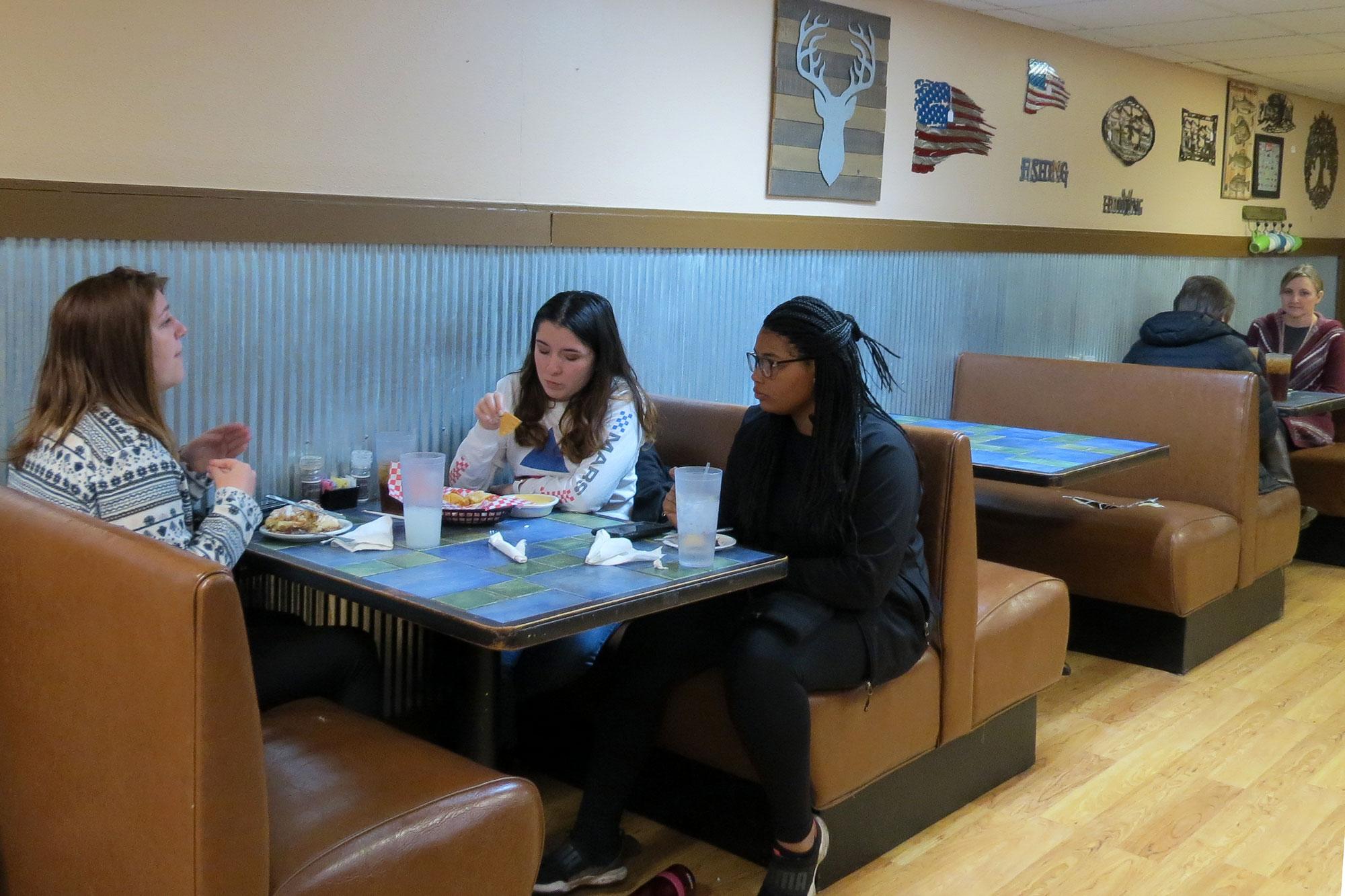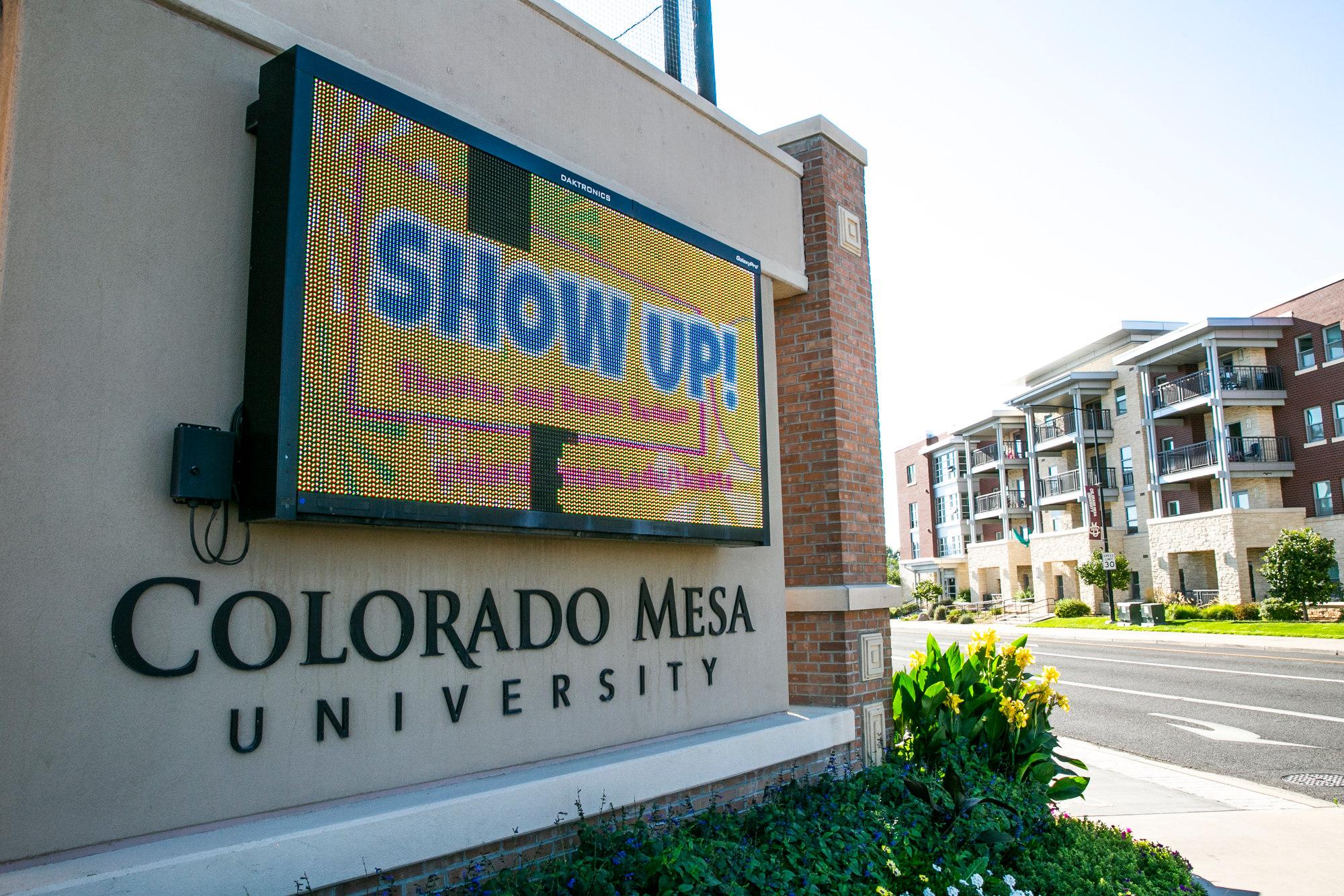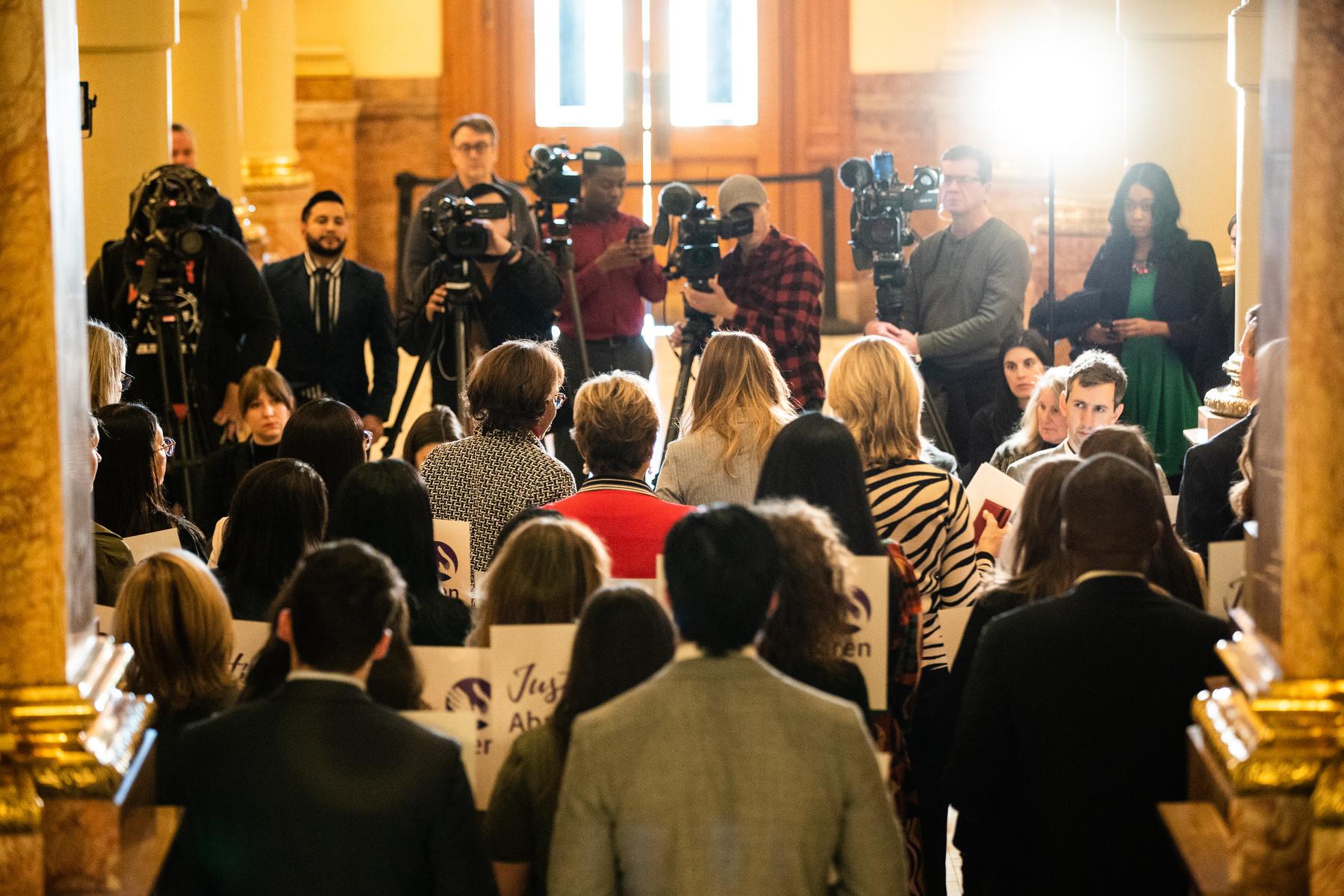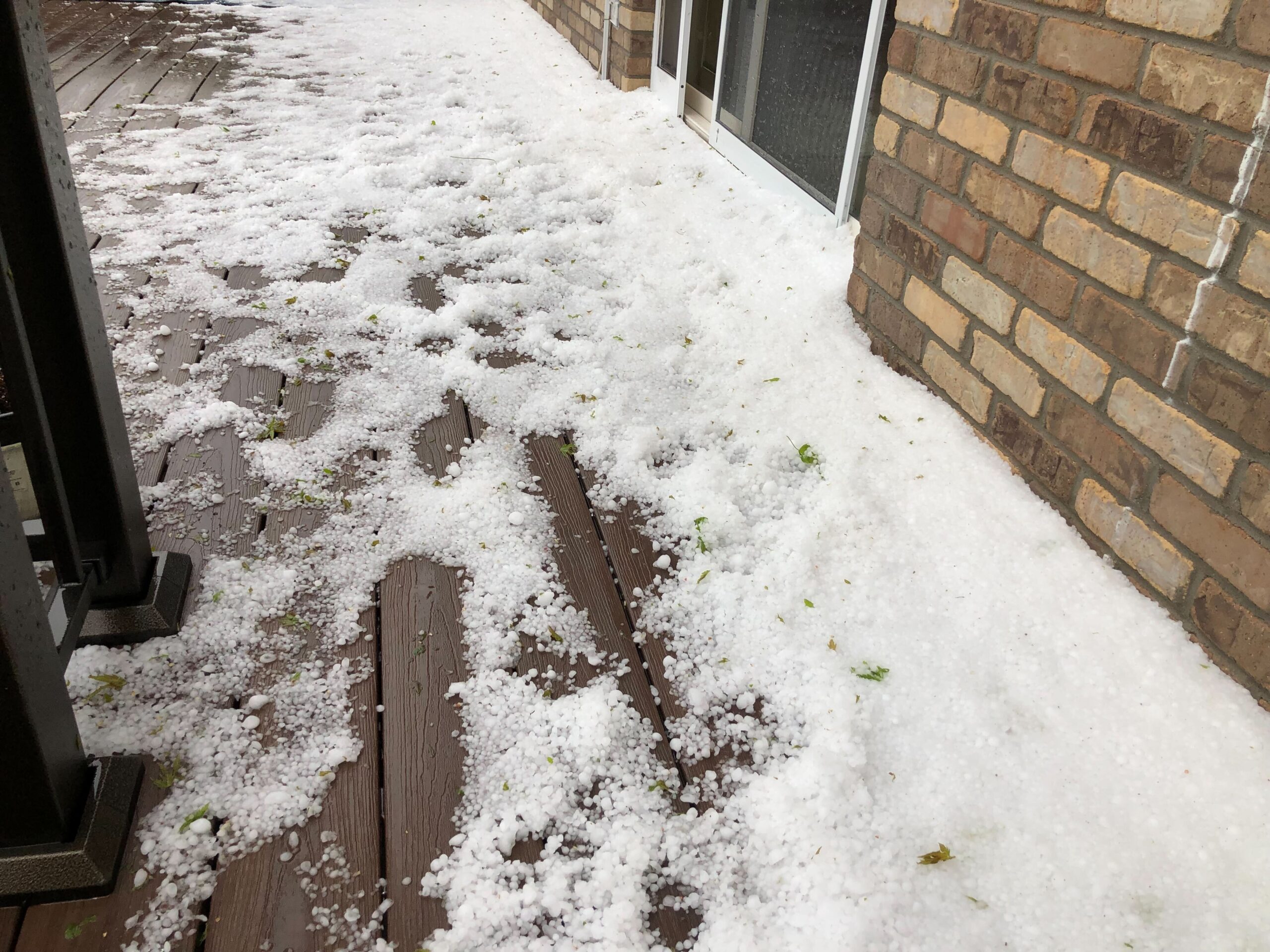

When Brittany Wagner, a teaching student from Colorado Springs, and 19 of her peers walked into Kirk’s Kitchen on tiny Springfield, Colo.’s main drag, people turned to stare.
“We get those looks,” she said. “Those looks like ... What are they doing here? Who are they? Where are they from?”
The looks weren’t unfriendly, just curious, Wagner said afterwards, but they reminded the group that they were visiting a community where nearly everyone knew each other.
That was an important insight for Wagner and her colleagues, most of whom are teaching students at Colorado College and University of Colorado Colorado Springs. They visited five districts in the area — Kim, Pritchett, Walsh, Springfield, Campo and Vilas — as part of a program intended to introduce teaching students to some of the state’s smallest districts.
Rural Colorado has an acute teacher shortage, and this first-time “rural immersion” program is intended to help education professors figure out what makes educators want to teach in rural school and get future teachers more comfortable with these communities.
“I think our goal is a little bit of trying to understand this generation and what would motivate them to want to be a rural teacher,” said Mike Taber, co-founder of the program and associate professor and chair of the Education Department at Colorado College.
Taber and his colleague, education professor Robert Mitchell of the University of Colorado Colorado Springs, hope to answer the question: “How do we make that connection happen?”
The purpose of the rural experience isn’t to line up jobs for the students, but to expose them to the joys and challenges in being a rural teacher and help them understand the culture and the landscape before they ever get inside a classroom.
Superintendents wouldn’t mind, though, if some of the students coming job hunting one day.
“Get these kids down here,” Vilas Superintendent Corey Doss said. “Show them exactly what we’re about, how great these places are.”
Unfamiliar Ground
One of their early expeditions was a Sunday drive to Picture Canyon in the Comanche National Grassland. The students chattered about how they get anxious when they don't have internet – but then when it came back, they didn’t feel the need to check things all the time. As they looked out the car windows, Taber pointed out a ferruginous hawk.
“Just being able to look for the things you normally wouldn't look for, you realize that the world here has its own geography, its own space, and its own place and it's different,” he said.
The students appreciated the wide open spaces but wondered about how long that novelty would last. Taber told them having a sense of place, a connection to where you teach is critical. But here, at the beginning of the trip, several told him that this doesn’t feel like their place.
“For me, like I’ve always lived in Denver, I’ve always been 5 minutes away from something,” Sahmyah Kelley said. These big spaces between things to do are “very unknown and uncomfortable to me.”
These students do have a strong sense that to teach here, it shouldn’t just be for a two-year stint. That's what a new rural stipend law asks of new teachers.
“I don’t think that’s fair to just be like, 'I’m just here to experience what your life is like but I’m not actually going to stay committed,'” Madison Mackenzie said. “It’s hard on the school.”
Taber asks whether they think they’d ever be able to move out of their comfort zone.
“How do you see yourself being challenged and overcoming those challenges is something I think faces all 20 year olds, right?” he said.
The students agreed: Most likely won’t end up teaching where they grew up.

A Wide Cultural Divide
Many of the Colorado Springs students had never experienced rural life, or what it’s like to teach in a tiny school.
One superintendent, who is also the agriculture teacher and the owner of 200-head of cattle, teaches his Future Farmers of America students how to trim and sell the consumable parts of a freshly killed cow. That’s not likely to happen in downtown Colorado Springs.
Some students were surprised by the abandoned buildings on main street and empty sidewalks. One student said she relaxed a little as soon as she saw a Dollar General store, a familiar landmark.
“I’ve never even heard of a graduating class of one or two,” Wagner said.
The students were assigned to shadow classes in different districts and there, they began to find their footing. Kelley, assigned to Campo school, read books to kindergarteners. She was amazed by how strong teachers’ relationships are with each child, “able to constantly track where they were and being able to break everything down to fit one person and their academic needs and their social emotional needs.”
This was important to her: She was homeless for a while in middle school, feeling at times lost in a sea of faces each time she changed schools.
Ellen Louks, another student, was struck by something else. In her own years in large high schools she said students felt like school was more of a chore or an obligation, like a monotonous grind of pre-planned lessons. But here, she noticed teachers tailor lessons to each student.
“I didn't see one single student who look disengaged or bored with being at school. And even the staff at the school, the superintendent, the secretary is, everyone was just super engaged and had a huge heart for the kids,” Louks said.
At a school basketball game, the students got a taste for how teachers are regarded as they watched the entire community cheer on the players. Enya Brass, a student at UCCS, said unlike in urban areas, “rural Colorado teachers are looked very highly upon, they’re basically the role models.”
But she said that public eye could be a challenge for some teachers.
“Everybody knows your business and everything about you,” Brass said. “And so, just making sure that you're keeping it very professional, even outside of the school districts is important.”

That could have big impacts on student teachers who have very different experiences and views than many teachers in rural communities. At a nightly reflection after a day of classroom visits and long drives, the students took stock of the more challenging divides. Sandra Curry, who is African American, wondered how much students in rural areas are exposed to people of color.
She recalled an interaction with one kindergartener.
“He randomly touched my skin and he was like, ‘Oh, I’ve never touched a black person before,’” she said.
It felt strange, but he was in kindergarten, and she let it pass.
Other students were surprised by some teachers’ comments, like how one likes working in a school because the superintendent is politically conservative, or another who planned to skip a lesson about Martin Luther King Day because the school has no black students.
Mike Taber reminded them that many teachers across the state weren’t trained in the same world the students are being taught in – such as lessons on inclusivity – and that’s something they’ll have to grapple with as they move into student teaching.
“You’re going to be challenged by the vernacular used by that classroom teacher,” Taber said. “You’re going to be challenged by their ideology and their philosophies about kids and learning and the labels that they’re going to be throwing out there because they’ve been throwing them out there for 30 years.”
They’ll have to decide whether to let things stand or introduce new cultures and ideas.

Outcome
For some, the trip served its purpose: They can now see themselves teaching in a rural community.
“It’s quiet and peaceful,” said Emily Main, who is Latina and a first-generation student at Colorado College. “That'd be really nice to have … when there's a hustle and bustle to be doing something from like 4 a.m. to 8 p.m., that can get old.”
Wagner would also seriously consider a rural teaching assignment. She’s attracted by the challenge of wearing multiple hats.
“I get to teach music, I get to teach English, multiple grades even,” she said. “So that is really exciting if I do teach in a rural school.”
She also appreciated that some districts offer affordable housing. A three-bedroom, two-bath house for $200 a month is the “perfect size for a family,” she said. Her husband grew up in a rural town in Wisconsin and she hopes to convince him that there are plenty of rural towns in Colorado.
But in the end, where someone chooses to teach is deeply personal. Cara Friedman, a Colorado College student from Los Angeles, was impressed with how productive rural classrooms are, how engaged students are. But for Friedman, going rural is likely too much of a leap.
“I don’t think that I have the hobbies or the past-times or to entertain myself out here,” she said. “It’s just too different.”
Still, the trip leaders Mitchell and Taber are learning a lot from the students.
“We have seen a noticeable increase in student interest in student teaching in rural locations as a result of this initiative,” Mitchell said.
He hopes there will be at least two students from the immersion experience returning to southeastern Colorado to do their student teaching. They plan to release a final report on the project this summer.









